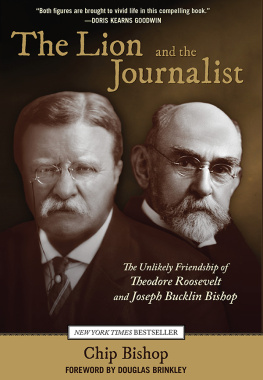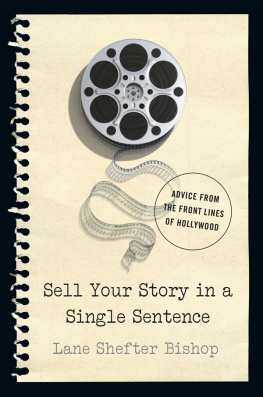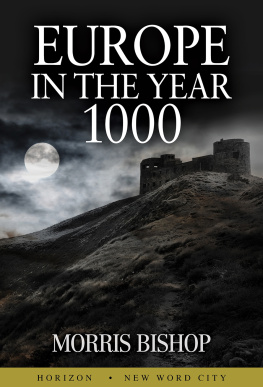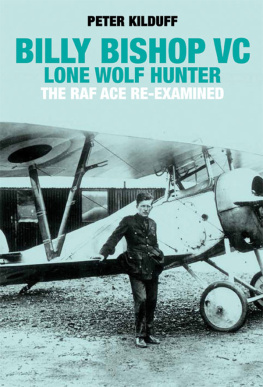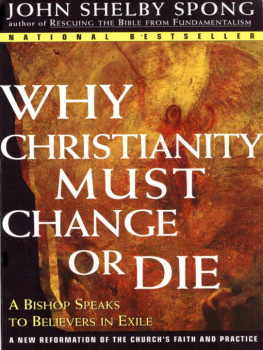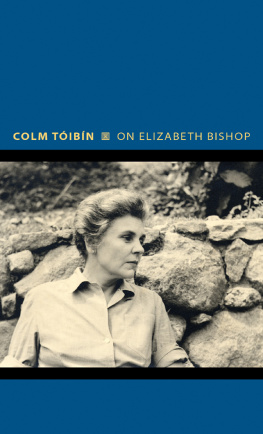THE
MAKING
OF
BILLY
BISHOP
THE
MAKING
OF
BILLY
BISHOP
The First World War Exploits of
Billy Bishop, VC
Brereton Greenhous

Copyright Brereton Greenhous, 2002
All rights reserved. No part of this publication may be reproduced, stored in a retrieval system, or transmitted in any form or by any means, electronic, mechanical, photocopying, recording, or otherwise (except for brief passages for purposes of review) without the prior permission of Dundurn Press. Permission to photocopy should be requested from the Canadian Copyright Licensing Agency.
Copy-editor: Lloyd Davis
Designer: Jennifer Scott
Printer:Transcontinental
National Library of Canada Cataloguing in Publication Data
Greenhous, Brereton, 1929
The making of Billy Bishop
Includes bibliographical references and index.
ISBN 1-55002-390-X
1. Bishop, William A., 18941956. 2. World War, 19141918 Aerial operations, British. 3. Great Britain. Royal Flying Corps Biography. 4. Fighter pilots Canada Biography. I. Title.
D602.G74 2002 | 940.44971092 | C2002-901064-0 |
1 2 3 4 5 06 05 04 03 02

We acknowledge the support of the Canada Council for the Arts and the Ontario Arts Council for our publishing program. We also acknowledge the financial support of the Government of Canada through the Book Publishing Industry Development Program and The Association for the Export of Canadian Books, and the Government of Ontario through the Ontario Book Publishers Tax Credit program.
Care has been taken to trace the ownership of copyright material used in this book. The author and the publisher welcome any information enabling them to rectify any references or credit in subsequent editions.
J. Kirk Howard, President
www.dundurn.com
Dundurn Press
8 Market Street
Suite 200
Toronto, Ontario, Canada
M5E 1M6
Dundurn Press
73 Lime Walk
Headington, Oxford,
England
OX3 7AD
Dundurn Press
2250 Military Road
Tonawanda NY
U.S.A. 14150

In Memory Of
Lieutenant
ERNEST BRERETON GREENHOUS
1st Battalion, Royal Scots Fusiliers
and
Number 9 Squadron, Royal Flying Corps
Killed in action
in the air over Flanders
26 August 1917
TABLE OF CONTENTS
MAPS:
Show me a hero and I will write you a tragedy.
F. Scott Fitzgerald, Notebooks [1978]
ACKNOWLEDGMENTS
My debt to the late Phil Markham goes beyond words. He was a knowledgeable researcher and a regrettably modest gentleman. I say regrettably because that modesty made him reluctant to place his meticulous explorations of the Bishop canon before the public. I (and others) spent several years, on and off, trying to persuade him to put his evidence and conclusions into print, and happily, shortly before his death, he did publish his paper on The Early Hours of 2 June 1917 in a specialist American journal. I have reached different conclusions about Bishops possible destinations that day, but we shared a common disbelief in Bishops account of where he went and what happened, and my explication owes much to Phils original research. His widow, Jo, was good enough to give me access to his papers.
Arthur Bishop did scholarship a service when he deposited originals and/or copies of his fathers papers with the Department of National Defences Directorate of History (as it was then known), making them available without restriction to interested historians. I have mixed feelings about using them to question and partially destroy the reputation of their originator, but I am truly grateful for the access thus provided.
My sister, Anne Thomas, was good enough to investigate many British sources on my behalf and provided invaluable assistance before her sudden and unexpected death in February 2000. For these and many other kindnesses, I remember her with great affection. I am also grateful to the following (in alphabetical order) for their support, advice and/or assistance: Yilmas Alimoglu, Serge Bernier, John Bruce, David Campbell, Isabel Campbell, Tim Dub, Norman Franks, Bill Glover, Hugh Halliday, Steve Harris, Sean and Andrew Horrall, Chris Johnson (who drew the maps), Madeleine Lafleur-Lemire, Gerry LaForce, Paul Lansey, David and Michael McNorgan, Ed Patten, Ken Reynolds, Lloyd Strickland and Mike Whitby.
Nevertheless, the conception and interpretation of Bishops exploits presented here is essentially my own. So are any errors that may have crept in. Mine, all mine! But I hope to God none have, for diehard worshippers of the Bishop canon (and there are certainly many of them) will no doubt be searching for a metaphorical stick with which to beat me.
INTRODUCTION
Now for the purpose of attaining an end so desirable as that of rewarding individual instances of merit and valour We have instituted and created... a new Naval and Military Decoration which We are desirous should be highly prized and eagerly sought after by the Officers and Men of Our Naval and Military Services.
The Victoria Cross, the British Commonwealths greatest acknowledgment of physical courage, was created in 1856 to recognize outstanding feats of bravery in the Crimean War (18541856) and in future conflicts. Over the years, the ratio between those eligible to receive the Cross and those upon whom it has actually been bestowed has made it the rarest of all decorations awarded for acts of valour rarer than the United States Medal of Honor; rarer than Imperial Germanys Pour le Mrite, the Third Reichs Ritterkreuz, with its various trimmings of oak leaves, swords and diamonds, or the former Soviet Unions Geroj SSSR Medalj
Nevertheless, some earlier awards were made on rather generous grounds in light of the First World War (19141918), a doleful but numinous experience that raised the bar considerably. In 1918, Rear Admiral Sir A.F. Everett, the naval representative on a committee considering the revision of the appropriate Royal Warrant, noted that the standard of valour and devotion to duty for the Victoria Cross is now very much higher than it was in the earlier years of its introduction. An exception, perhaps, was the case of Second Lieutenant W. Leefe Robinson, who won his in September 1916 for shooting down, with the new incendiary ammunition, the first Zeppelin to be destroyed over England, even though the only significant risk he ran was the (not inconsiderable) one inherent in night flying at that time. Robinsons was surely a politically motivated award if ever there was one, handed down by an intensely relieved bureaucracy fearful of a restive population suddenly and painfully exposed to the horrors of aerial bombardment.
The original Warrant stipulated that the senior officer of the unit or formation concerned, upon initiating a VC recommendation, shall call for such description and attestation of the act as he may think requisite before forwarding it to the War Office or Admiralty. During the South African War (18991902) this became, in practice, a requirement for at least two eyewitnesses. They might be totally illiterate, as in the case of Sergeant N.G. Leakey, Kings African Rifles, who won his posthumous VC in Abyssinia in 1941, his valour attested to by witnesses who signed their statements with thumbprints. They might even be found among the ranks of the enemy, as with Flying Officer L.A. Trigg, DFC, of the Royal New Zealand Air Force, whose aircraft was shot down with the loss of all on board when attacking a surfaced submarine off the West African coast in 1943. It was left to survivors of the sunken U-boat to confirm the courage and determination with which Trigg had pressed home his attack.
Next page

